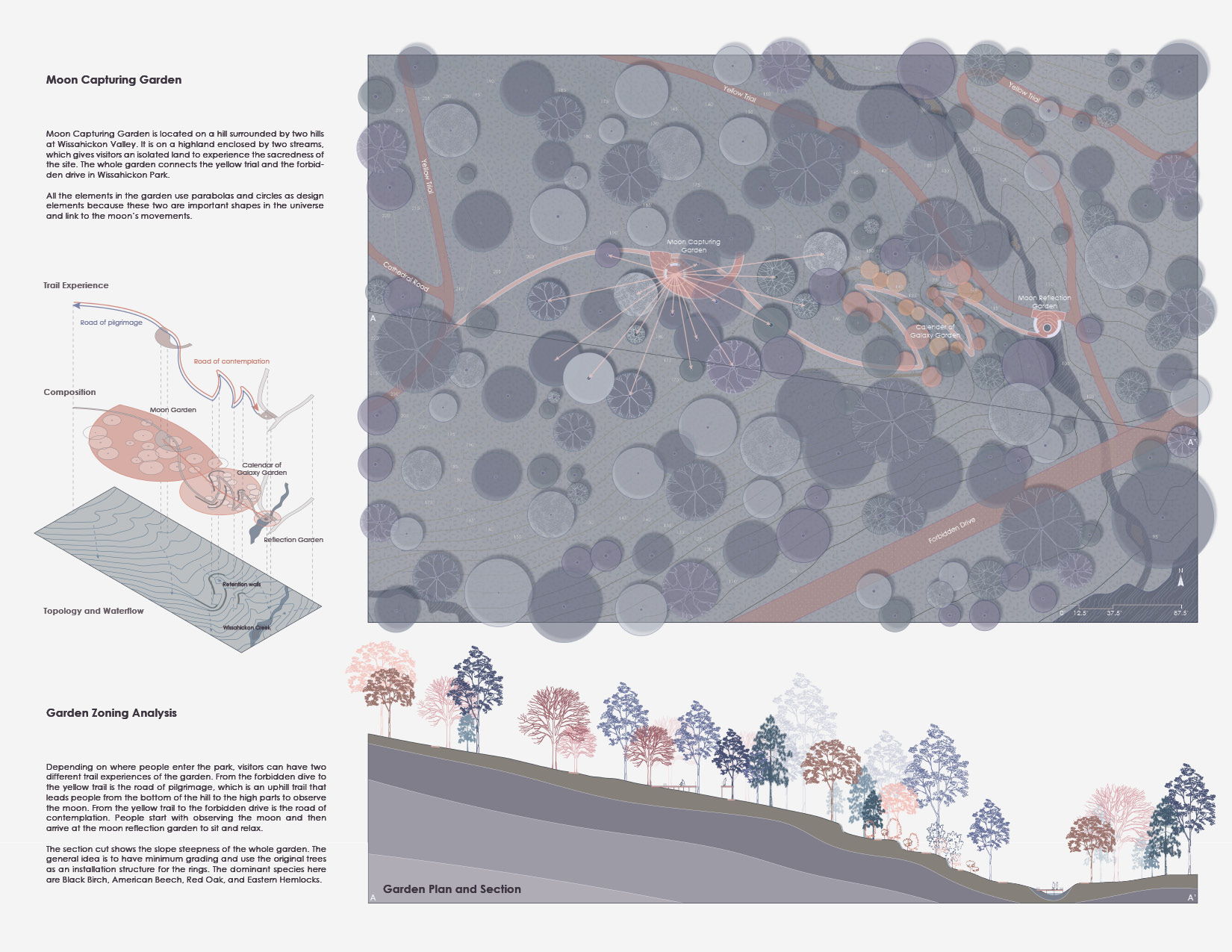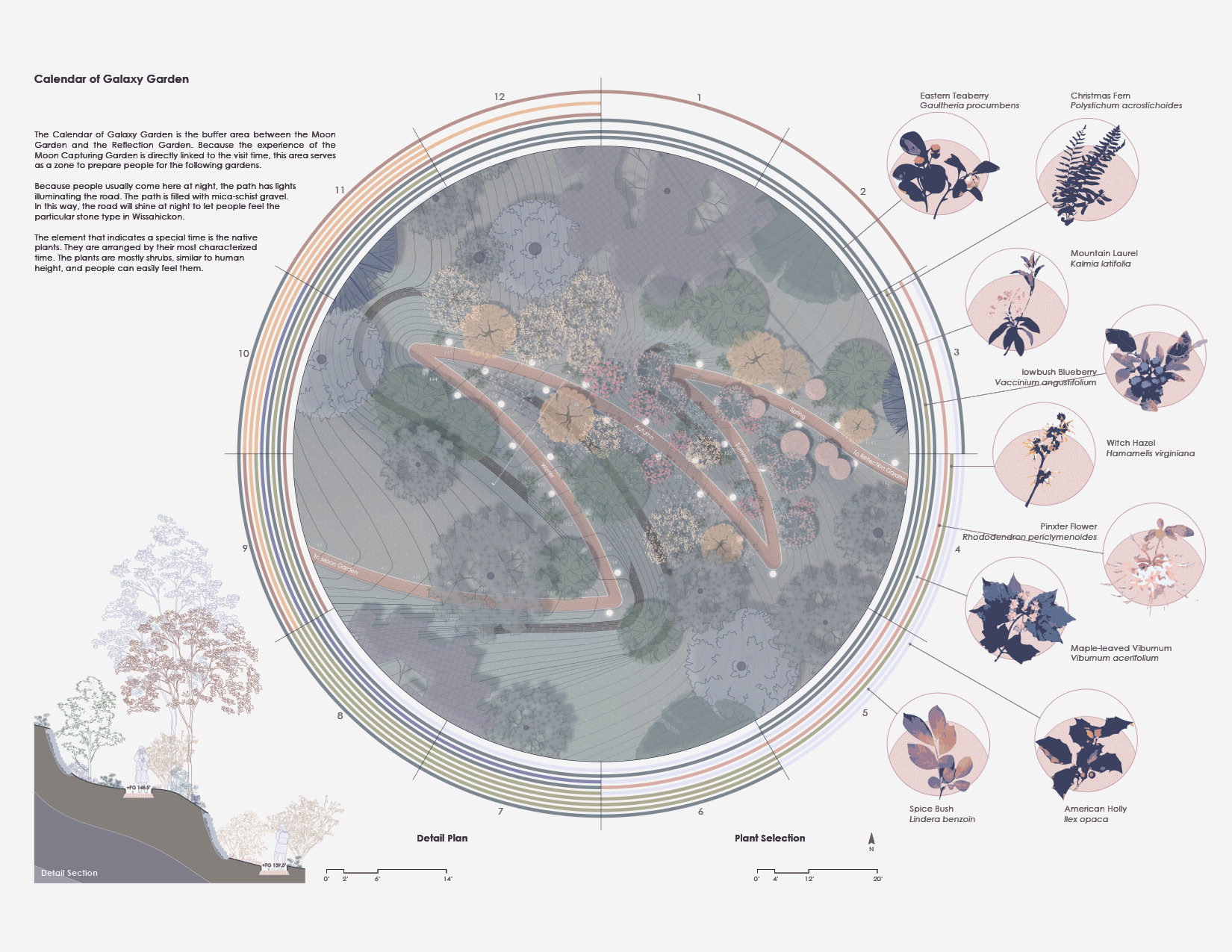Capturing the Moon: Symbolism of Emotional Sacredness
- Time: 2022.10 - 2022.12, Academic work
- Collaboration: Individual Work
- Instructor: Douglas Robb
- Location: Wissahickon Valley, Philadelphia, Pennsylvania
- Medium: ArcGIS Pro, Stellarium, Rhino, Adobe Suite, Laser Cut, Circuit
Project description
Wissahickon Valley is located in the northern part of Philadelphia. After multiple field trips and research, our task for studio 501 was to design a garden based on a theme of our choice. The theme I chose for my garden was sacredness. Opposite to the normal landscape gardens that usually focus on naturalism, this project focuses on symbolism and intends to awaken subtle emotions of visitors by using multiple installations.
Because sacredness is a personal and vague concept, I start by defining the sacredness that this garden focuses on: omnipresent, coincidental, and momentary, nothing about religion. The object I use to achieve such sense of sacredness is the moon, which is already an idealized object in the field of art and literature. The moon is both well-known and mysterious, and the movement of the moon perfectly fits my definition of sacredness. The moon's position is different on different days or hours, and the moon's location in the sky is momentary. When people observe the moon, a sacred object, they create specific coincidences that connect the moon and people's inner selves.
The site for this moon-capturing garden is based on fieldwork in Wissahickon. I chose an isolated spot on a hill with cliffs and streams on three sides. Isolation and fewer ground coverings enable fewer distractions from the surroundings and give visitors a space to look up to the sky. The garden is linear and connects the existing Forbidden Drive and Yellow Trail. People can have different experiences when they enter the garden from the two ends, one at the top and one at the bottom of the hill.




